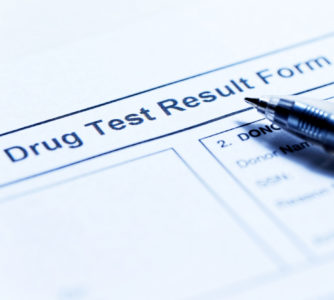 The Food and Drug Administration has announced that it will require drug companies to conduct studies to determine if prescription opioids are effective in treating chronic pain.
The Food and Drug Administration has announced that it will require drug companies to conduct studies to determine if prescription opioids are effective in treating chronic pain.
A number of studies have already suggested that pain controlling opioids are ineffective beyond 12 weeks, and many industry professionals say that continued opioid use after this period can increase a person’s likelihood of developing a dependence or addiction. The FDA wants to supervise the new studies to determine if certain changes, like the following, need to be made:
- Changing the labeling on certain opioids
- Imposing special rules for prescribing, dispensing and taking certain opioids
- Prohibiting use of certain opioids in some cases
“We are going to impose a mandate on existing products . . . to answer the question that people have been posing for years: whether you have declining efficacy, and whether that declining efficacy can lead to addiction,” said FDA Commissioner Scott Gottlieb.
Some Don’t Agree
While it may seem like a good move that the FDA is appearing to take a step in the right direction of opioid abuse, others say the new measures are nothing more than a stall tactic for big pharma. Andrew Kolodny, director of Physicians for Responsible Opioid Prescribing, said the FDA ordered a similar measure in 2013 and that they already have all the research they need to make changes that could help protect the public.
“Here we go again,” Kolodny said in an interview. “That’s exactly what the FDA said to us in 2013. . . . Five years later, we don’t have the studies and another FDA commissioner says, ‘We’re going to do the studies.’ ”
However, Gottlieb argued that the research would be aimed at immediate, extended-released and long-acting opioid tablets that are given for pain care outside the healthcare facility. The studies would also cover current medications on the market to examine if new applications of the pain reliever could be more effective. The FDA will also be conducting a second study that is out to determine if opioids can actually cause users to become more sensitive to pain.
A similar study was carried out back in 2013, but Gottlieb said those studies were difficult to carry out because the FDA could only ensure post-marketing studies on safety, not effectiveness. They now have the authority to demand effectiveness research as part of an act passed back in October.
The opioid crisis killed 47,600 people in 2017, but there’s hope that the new research can lead to effective changes. There’s still plenty of work to be done, but with more control over effectiveness research, there’s hope on the horizon.
 New research published in the Journal of Applied Physiology revealed that regular exercise can have your muscles acting as if you are decades younger than your actual age.
New research published in the Journal of Applied Physiology revealed that regular exercise can have your muscles acting as if you are decades younger than your actual age. Most pain practices have the occasional patient who they suspect are on controlled substances. Since drug abuse has always been a major problem in society, and because clinics prescribe medications, most practices also screen patients for appropriate drug use and abuse.
Most pain practices have the occasional patient who they suspect are on controlled substances. Since drug abuse has always been a major problem in society, and because clinics prescribe medications, most practices also screen patients for appropriate drug use and abuse. Genetic testing is one of the hot new topics in society and medicine. There are multiple companies providing a variety of types of genetic testing and for a wide assortment of circumstances. The most common we here about is for determining our heritage and background.
Genetic testing is one of the hot new topics in society and medicine. There are multiple companies providing a variety of types of genetic testing and for a wide assortment of circumstances. The most common we here about is for determining our heritage and background.